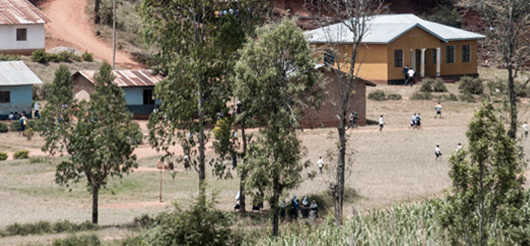What LAI are: origins and establishment
Land administration institutions (LAI) comprise cadastres, public land registers and agrarian reform, regulation or titling institutions; these institutions together form the Land Administration System (LAS).
The land register
The Public Register of Real Properties, or land register, was established in Central American countries at the end of the nineteenth century. It is regulated by the civil code of each country and is the oldest existing legal land administration institution. It was created with the aim of registering transfers of estates and other real rights. The first registers were used to record the titles that the central government gave to individuals, thus institutionalizing private ownership as a form of tenure. It should be noted that these institutions did not adopt the same model throughout the Central American region. See Land Administration Authorities in Municipal Governments in module 3.
Some authors currently emphasize the role of land registers in boosting some impacts related to ownership: ““[the existence of] effective, efficient public land registers, which guarantee legal certainty of title of register entries, which guarantee the legality of commercial transactions and thereby promote economic development in general”1.
The cadastre
The theoretical aspect of the cadastre is defined as an inventory of real property mapped with the limits, parcel location and alphanumeric data associated with the property and all its domains (physical, economic and legal). In Latin America the cadastre was the second LAI legally created, being institutionalized from the 1970s onwards for fiscal purposes and for integration of national territory. The legal provisions which created the cadastre involved the transfer of land ownership by means of coordination between the cadastre and the land register.
Several factors limited the cover of the cadastre and compliance with its fiscal function. First, due to the high cost of setting it up, its cover was limited to urban zones and areas of greater economic development, excluding from these registers rural zones that were difficult to access and of no fiscal interest. Second, over time and with unreliable staff and equipment, cadastral information was not kept up to date, which also made it difficult to collect taxes. Finally, integration of national territory in the cadastre was difficult because the planned coordination between the cadastre and register did not happen and the creation of the cadastre did not prevent private surveyors being commissioned to measure estates not regulated by public institutions.
Cadastral offices can now have two forms. In the first case, as in Nicaragua, the cadastral office forms part of the institutions related to geographical affairs and territorial planning. In the second case, as in El Salvador and Honduras, the cadastral office is an entity that works jointly with the register.
Links between the cadastre and other LAIs
Links between the cadastre and other LAIs
As a Land Administration System (LAS) Institution, the cadastre builds links with other institutions, including the following:
- With the land register to guarantee legal security of tenure rights by certification of physical data and the location of the property in estate transfer and modification documents;
- With the tax institution (tax collector), by providing information for the accurate evaluation of the property for tax purposes;
- With the municipal authority, for territorial (urban and rural) planning and development purposes, and to validate and/or supply information useful for the fiscal evaluation of real property subject to tax payment, and
- With land tenure distribution and titling regulatory Institutions, to include in the legal diagnosis data identifying registered and unregistered properties, positioning its tenure situation physically and legally.
Regularization or titling institutions
Regularization or titling institutions started as institutions responsible for the titling and redistribution plans defined by agrarian reform laws. In some countries these institutions are maintained and in other cases they have been transformed to accompany the new agricultural modernization and promotion functions. In Honduras the National Agrarian Institute (INA) is a semi-autonomous state body which was set up in 1961 with the aim of preparing the Agrarian Reform Law responsible for granting provisional titles exchangeable for definitive title deeds to meet the agreed annual quota. Based on the modernization and development law of the Agricultural Sector, in 1992 the institute took over responsibility for modernization and investment incentive initiatives in the agricultural sector.
In Nicaragua, the property intendancy was created within the Attorney General’s Office as a decentralized public agency and legal entity with its own equity. In Mexico in 2013 the Ministry of Agrarian Reform (SRA) became the Ministry of Territorial Agrarian and Urban Development (SEDATU). Its work is increasingly focusing on the regularization of peri-urban settlements owing to rapid city growth in the region. This also applies to the Property Legalization Institute of El Salvador.
In Central America municipal authorities also carry out regularization, titling and raising to full tenure (see Municipal government powers in land administration module 3).


